Nature is a wonder. As you travel around to different parts of the world, you come across completely different ecosystems.
Some plants and animals can look like they belong on another planet, and the beauty out there is something incredible to behold.
One of the most amazing things about the animal world is all of the different colors that paint animals based on where they live and how evolution has affected their appearance.
Some animals have color to hide them better, and others’ colors are designed to make them look fierce to any would-be predators.
But what about white animals? There are a surprising number of naturally white animals that aren’t albinos. Many naturally white animals are mistaken for albino animals when in fact they are simply white.
Table of Contents
The Difference Between White and Albinism
People commonly mistake albino animals for white animals. Albino animals occur in many species, but it’s a recessive trait that makes them that way.
They are born without pigment in their hair and other parts of the body. White is a color, while the absence of color is called albinism.
21 Naturally White Animals That You Can Come Across in Nature
1. Rabbits
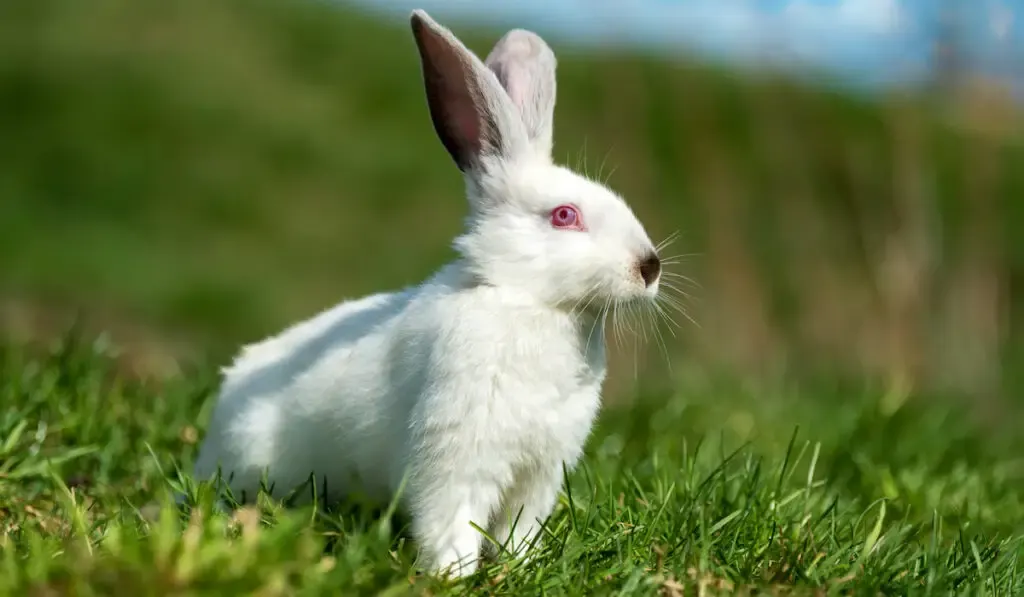
Multiple types or species of rabbits are light in color. What’s awesome about rabbits, though, is that they can turn from even a brown or a grey into a completely white coat during the winter.
Scientists think that the color shift is due to what’s called photoperiod, or the lack of sun that they receive in colder temperatures.
Of course, the white also helps them blend in with the environment to make it harder for birds and other predators to spot them.
2. Siberian Hamsters

You’ll find a lot of hamsters that are a mix of white and some other colors like brown, grey, or black, but the Siberian Hamster has a lovely pure white coat that will stay white in most temperatures.
Exposure to natural light doesn’t affect the shade of their coat all that much.
3. Arctic Foxes
Arctic foxes are another animal that changes shades when winter comes along. They’re located mostly in northern Canada and Alaska and go from grey to white once the snow starts falling.
4. Ptarmigans
If you’re out looking for wildlife in the wintertime, ptarmigans can be pretty hard to find because they’re a stark white color that will blend in with the snow around them. The ptarmigan is related to chickens and pheasants, so you can imagine what they will look like.
They may keep some of the darker, black feathers in their tails, but apart from that, they’re a bright white that looks brighter than other birds because they keep air bubbles in their winter feathers for insulation.
5. Polar Bears
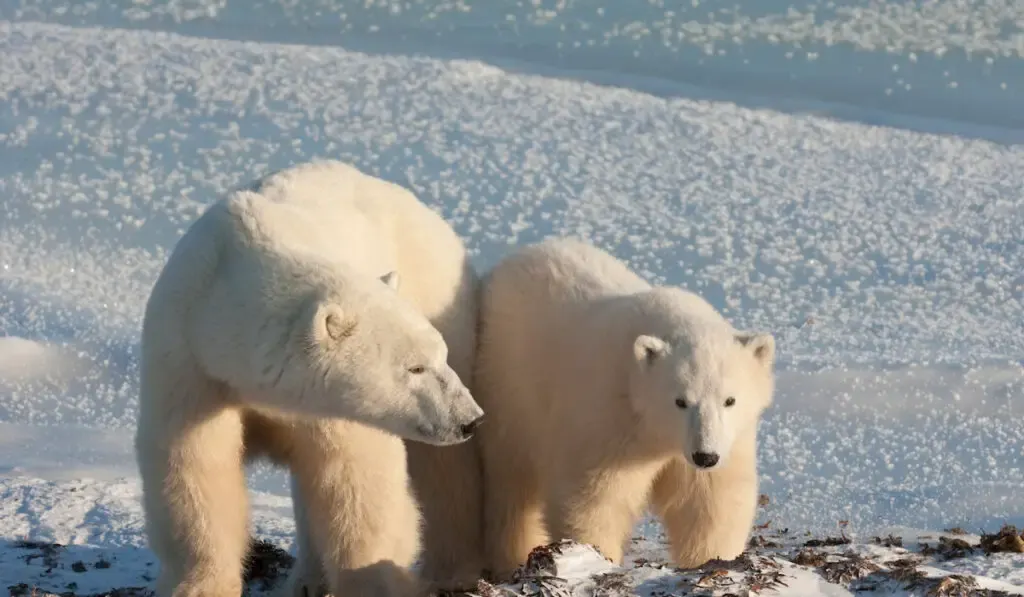
These ferocious animals are covered in white fur because they live in icy climates where there’s often nothing but ice and snow for miles.
Their white color allows their prey to regularly confuse polar bears with snowdrifts. They maintain their white coats because their hairs are actually hollow with no white pigment, which can be a surprise to a lot of people.
6. Swans
Swans are graceful birds that come in both black and white. These beautiful birds regularly make appearances in movies and well-kept parks.
They can grow to be very big, and sometimes their wingspan can reach up to 10ft long. Their long necks make them skillful feeders.
7. Dogs
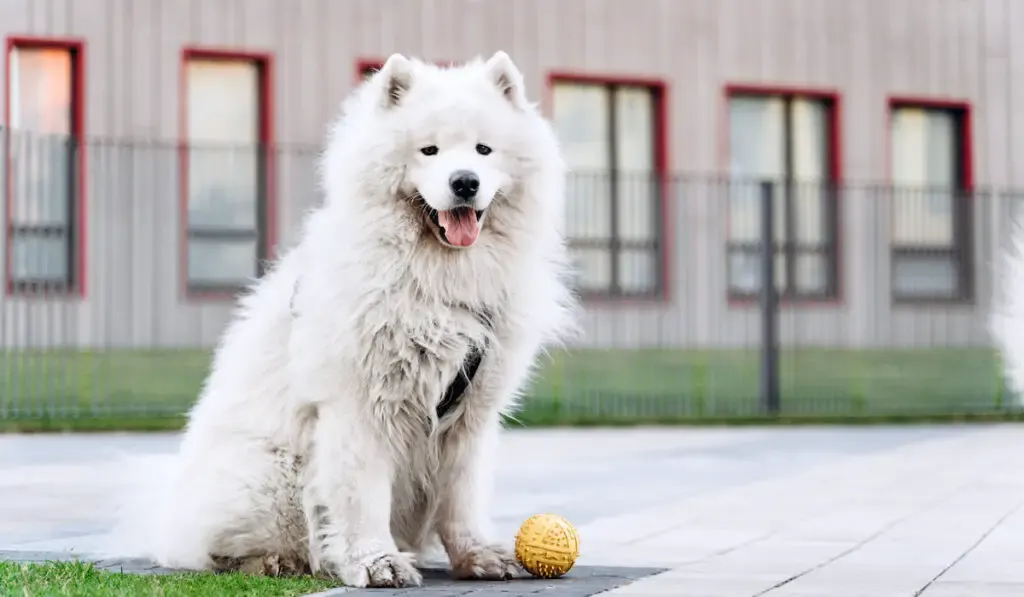
There are plenty of white dog breeds like Maltese, Bichon Frise, Japanese Spitz, Samoyed, and Havanese. They look adorable as puppies, but keeping them clean and looking their best becomes quite a challenge as they grow older and run around outside.
Many white dogs have tear ducts that turn red from watering eyes.
8. Cats
Domestic cats are another naturally occurring white animal. It’s rarer to find a cat with an entirely white coat.
More often than not, cats will have white coats with brown or black markings that vary in size. Cats are typically very meticulous about keeping themselves clean, so you can expect to see a white cat bathing themselves throughout the day.
9. Rats
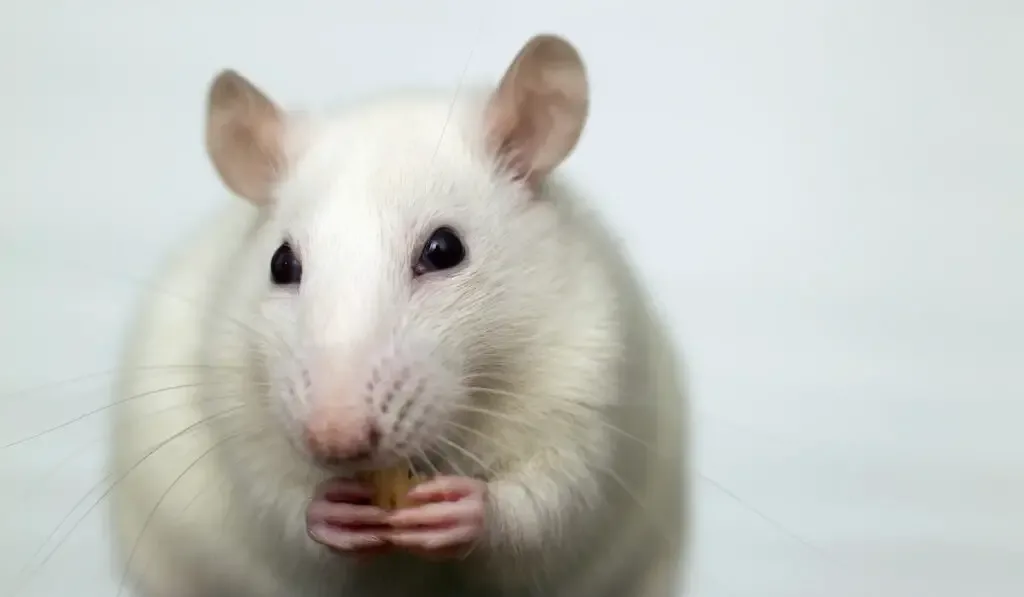
All albino rats are white, but not all white rats are albino. Some rats are born white with white pigment in their hair.
The way you can tell if a rat is an albino, as with most animals, is to take a gander at their eyes. Pink eyes are a dead giveaway that a rat or the albino alligator you’re looking at is, indeed, an albino animal.
10. Sheep
Sheep are white and provide all of that wonderful wool that keeps you warm when it’s cold outside. Because they are outside and playing around in the dirt for most of their lives, it’s easy for sheep to look a bit dusty and gray.
However, once they’re clean, sheep tend to have a dull white coat that is thick and keeps them warm from the wind and chill in most of their natural habitats.
11. White Lions
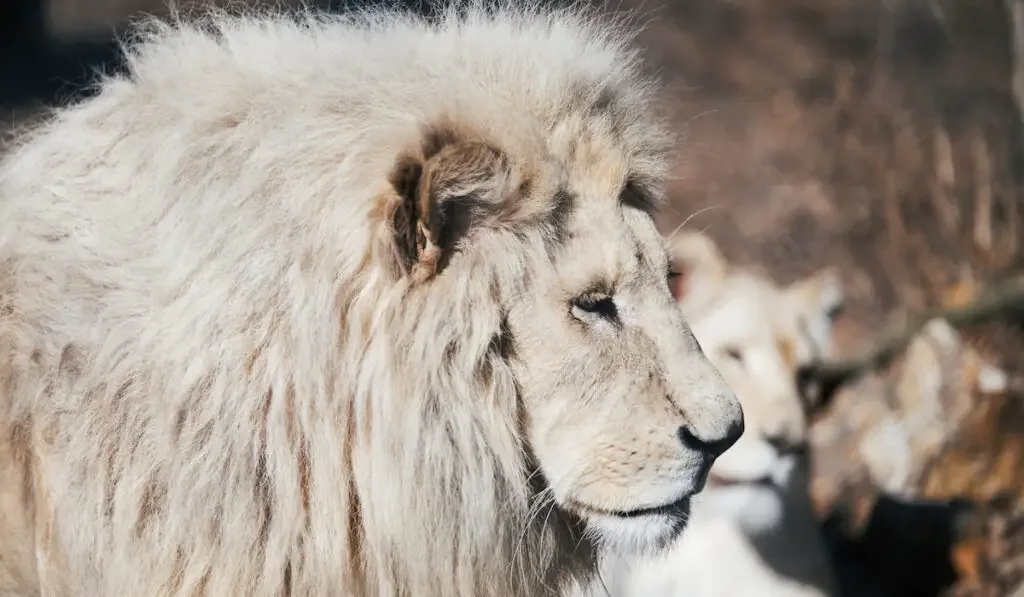
White lions aren’t albino lions. Their white is a result of a recessive genetic trait called leucism. Some people refer to leucism as a more mild case of albinism.
White lions look white, but it’s not the stark white that you’ll see on an albino tiger or lion. Most of the time their white coat is a dull white or light blonde. They’re different from “normal” lions.
12. Chinese White Dolphin
If you’re lucky enough to see a Chinese white dolphin in the wild, you’ll notice that their body cores are white, but you see pink as you move out to the edges like on their mouths, fins, and tails.
These dolphins mainly live in the western Pacific and Indian Oceans. One interesting fact about these animals is that they turn white and pink as they grow older. When they’re young, they are grey with spots.
13. White Peacocks

This is one of the most striking animals on the list. When a white male peacock has his tail fully unfurled, it’s quite a sight to take in.
They scream grace and elegance, and these domesticated birds are in very high demand. Their tails have small crystals in them so that they sparkle as the light hits them when they are out in the sun.
14. Arctic Wolf
Much like the arctic fox, arctic wolves adapt to their environments by changing into completely white coats when temperatures get cold outside. Their pure white coats make them much harder to see, especially when it’s snowing, so they are incredible hunters.
15. White Tiger
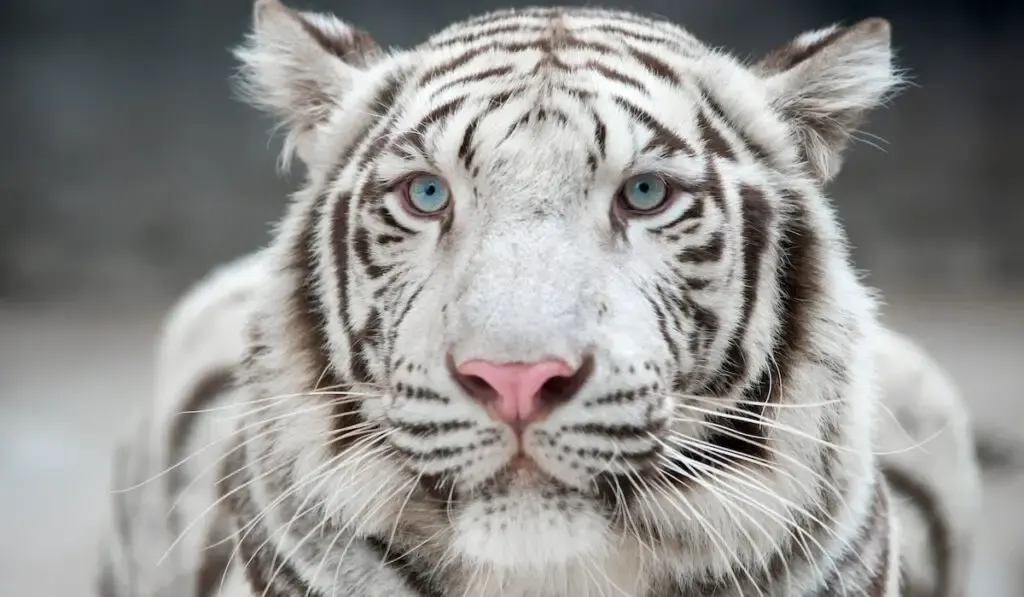
We’ve mentioned white tigers in the white lion section above, but these awesome animals certainly deserve their spot on this list.
White tigers aren’t albino tigers, though those also exist in the wild. White tigers have white coats because of leucism.
Their lighter coats don’t seem to make much a difference in the wild, though they are more of an eyeful for anybody watching.
16. Snowy Owls
Snowy owls are hard to spot. They are skilled hunters who prey on rodents, smaller birds, and other animals that they can swoop down on and grab with their sharp claws.
Most snowy owls come with dark specks on the edges of some of their feathers, so they aren’t completely white.
Their striking eyes play off of their white feathers well, making them one of nature’s most incredible animals.
17. White Yak
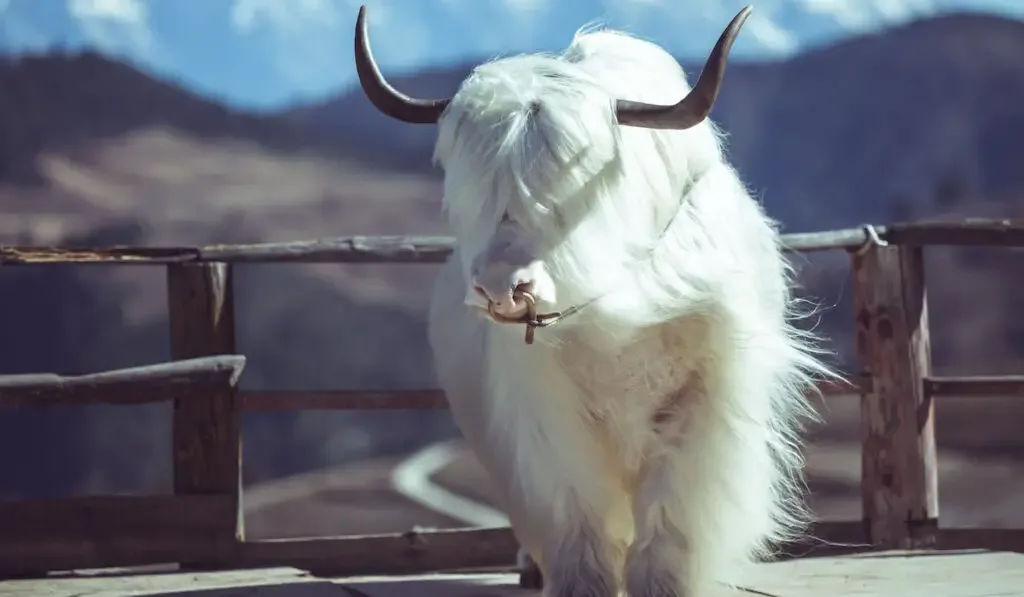
White yaks are native to the Himalayas. If you’re ever lucky enough to travel to Tibet, southern Russia, or Mongolia, you may get to see them in action.
People in the region use them for riding, to carry loads, and even use their milk for drinking, butter, and other household products.
18. White Squirrel
Some of these animals are exotic creatures found in far-off countries. The white squirrel, on the other hand, can be found in several parts of the United States.
The next time you’re out at the park, keep an eye out for any white squirrels scavenging for nuts or scurrying up a tree.
19. Harp Seal
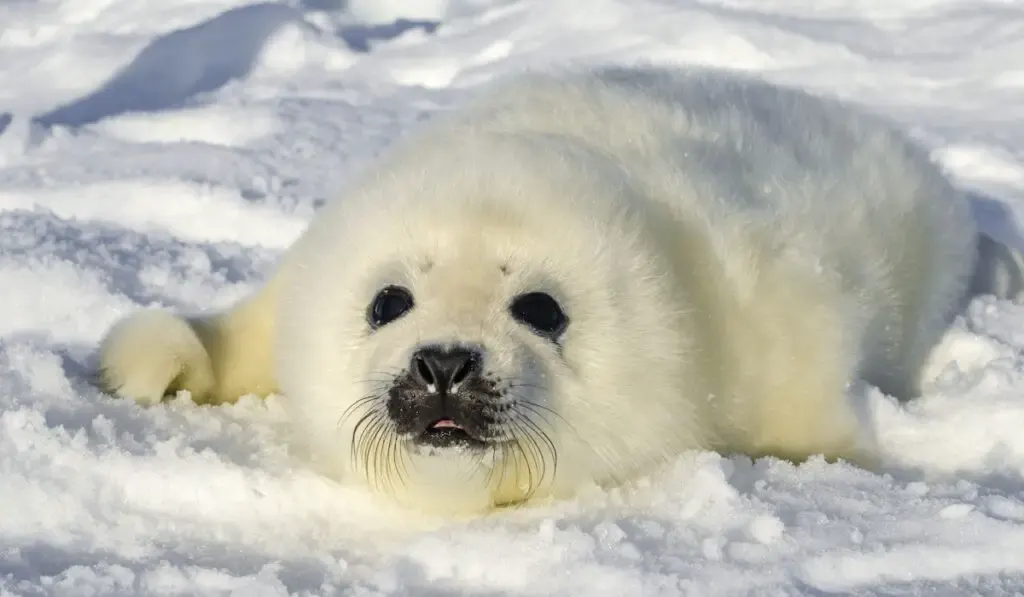
We talked already about polar bears and how their white fur makes them hard to spot. But what about their prey?
The harp seal comes in an almost identical shade to polar bears to try and hide from one of their main predators. They’re native to the Arctic Ocean and the northern part of the Atlantic Ocean.
20. Mountain Goat
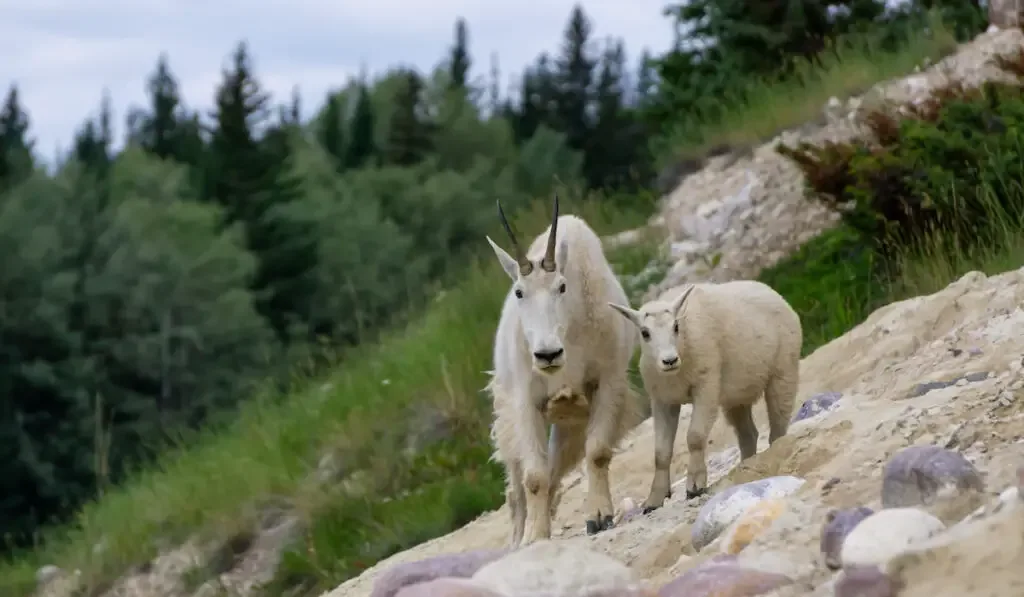
Mountain goats, also known as the Rocky Mountain goat, are native to North America.
These goats are some of the most skilled climbing animals out there, and you’ve probably seen pictures of them balancing on razor-thin mountain edges or cliffs.
They can climb in the snow and on ice very well and tend to live at high elevations.
21. Mice
Mice can also come in white, much like their cousin rats. Again, all albino mice are white, but not all white mice are albinos. Look at their eyes to spot which ones are white mice. You’ll see deep, dark eyes staring back at you.
